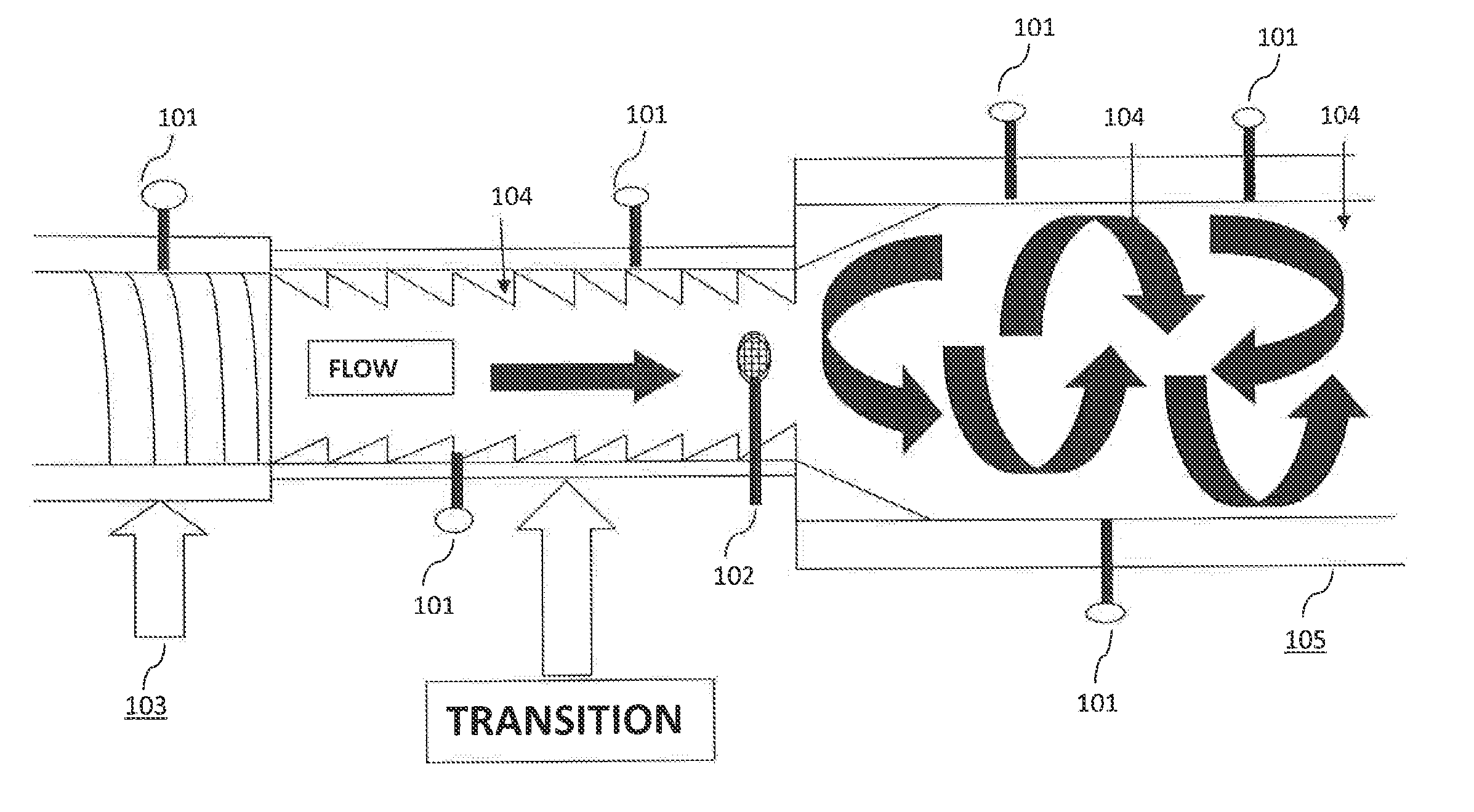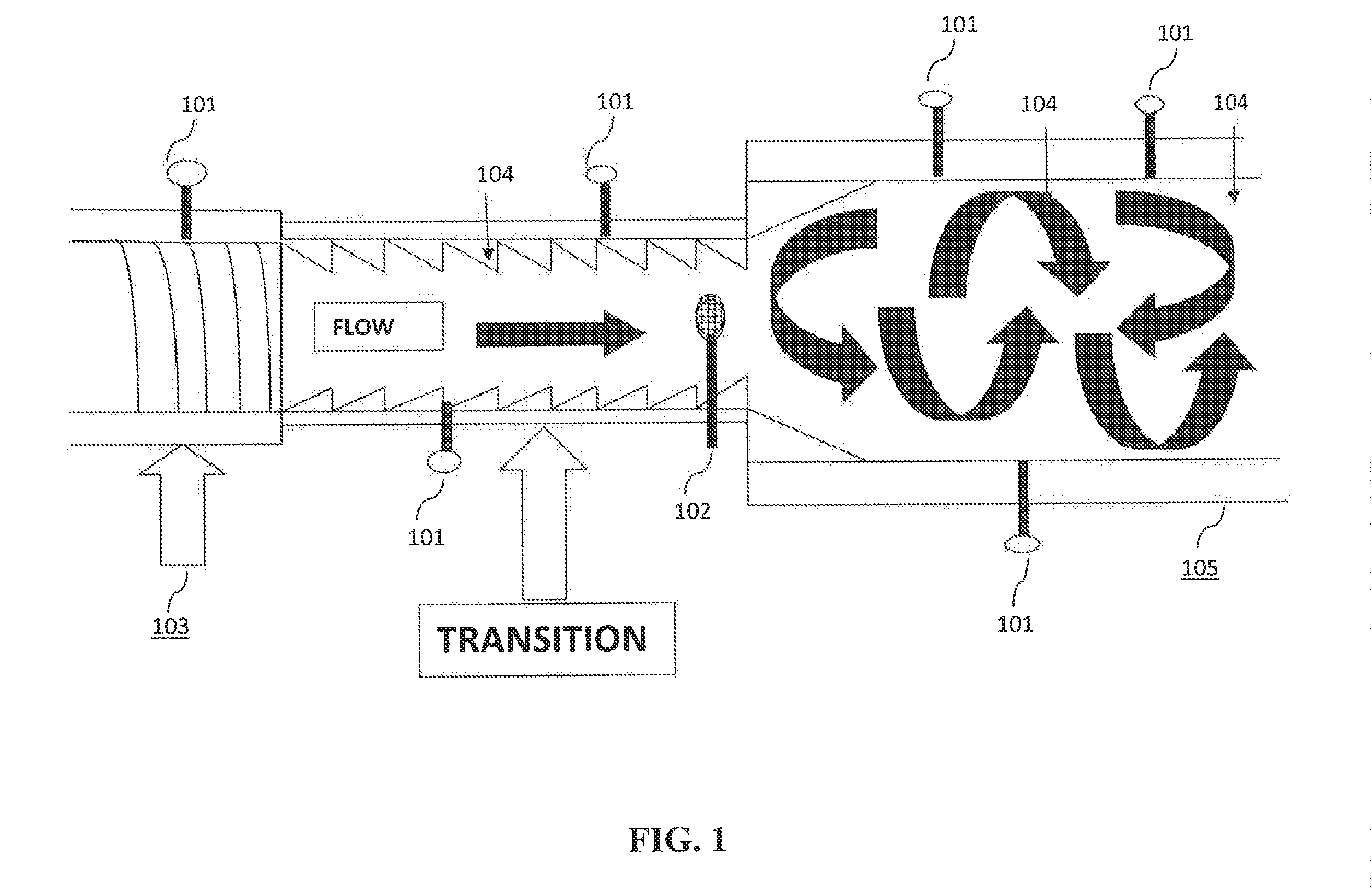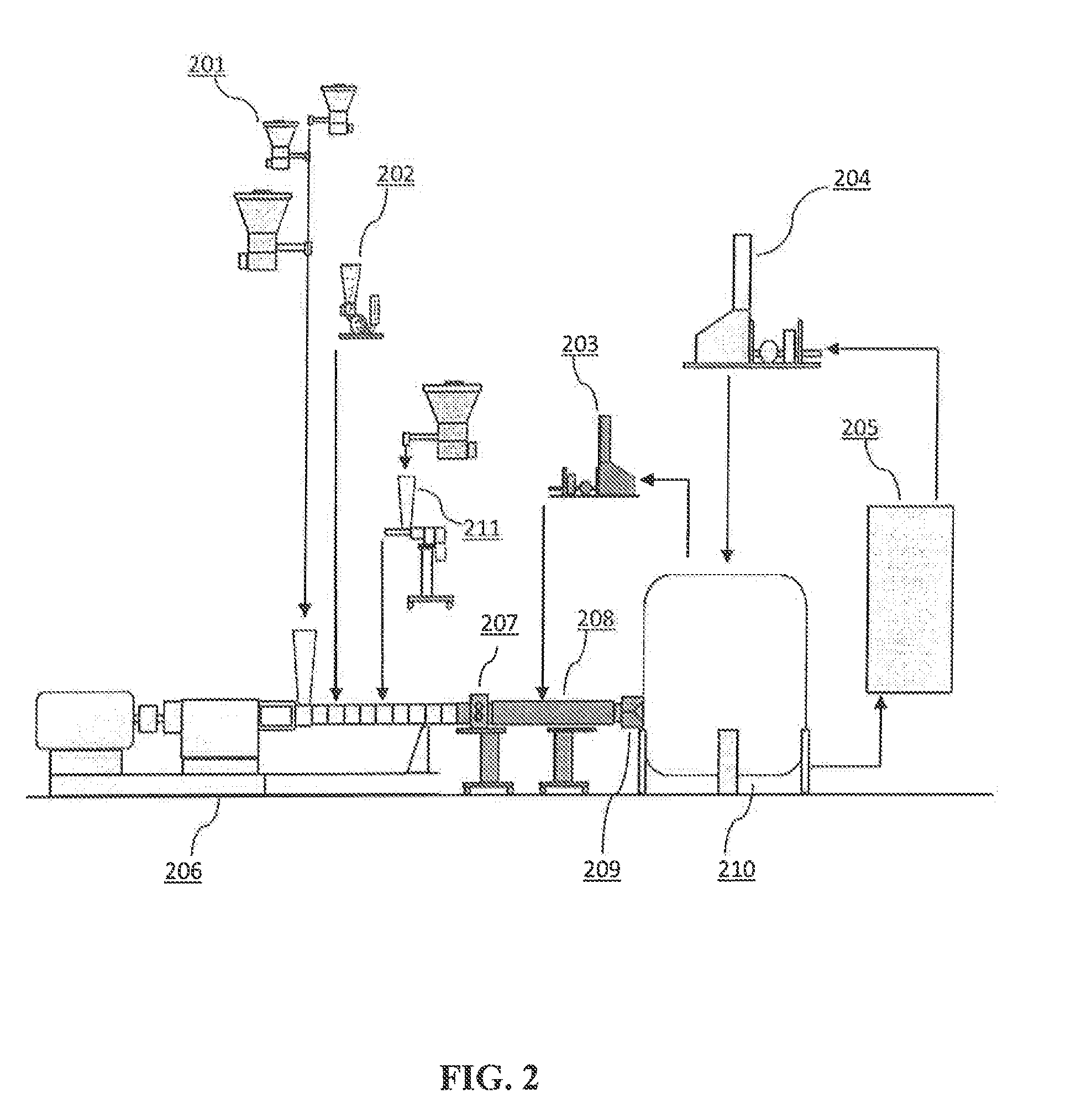Continuous cellulostic pre-treatment and bio-mass processing by reactive extrusion
a technology of reactive extrusion and cellulostic pretreatment, which is applied in the direction of glucose production, food shaping, chemical production, etc., can solve the problems of limited success in achieving an “explosion” and achieve the effects of increasing the yield of ethanol, enhancing the rate, and increasing the reactivity of cellulos
- Summary
- Abstract
- Description
- Claims
- Application Information
AI Technical Summary
Benefits of technology
Problems solved by technology
Method used
Image
Examples
Embodiment Construction
[0016]In the method being described here, cellulosic materials are treated with Supercritical Carbon Dioxide in an extruder. Machine configuration and operating parameters are strictly controlled in a manner to enhance the ability of Supercritical CO2 to enter into the ceils. This results in a controlled deterioration of the cell walls, increasing the reactivity of cellulose and also enhancing the rate and the extent of cellulose hydrolysis. This precisely controlled combination of pressure, shear & temperature accelerates the penetration of carbon dioxide molecules into the crystalline structures, thus more glucose is produced from cellulosic materials after the cell disruption as compared to those without the pretreatment increasing glucose yield by as much as 50%, Concurrent saccharification and fermentation tests also show the increase in the available carbon source from the cellulosic materials for fermentation to produce ethanol. As the system operates at low temperature, it w...
PUM
| Property | Measurement | Unit |
|---|---|---|
| Fraction | aaaaa | aaaaa |
| Temperature | aaaaa | aaaaa |
| Pressure | aaaaa | aaaaa |
Abstract
Description
Claims
Application Information
 Login to View More
Login to View More - R&D
- Intellectual Property
- Life Sciences
- Materials
- Tech Scout
- Unparalleled Data Quality
- Higher Quality Content
- 60% Fewer Hallucinations
Browse by: Latest US Patents, China's latest patents, Technical Efficacy Thesaurus, Application Domain, Technology Topic, Popular Technical Reports.
© 2025 PatSnap. All rights reserved.Legal|Privacy policy|Modern Slavery Act Transparency Statement|Sitemap|About US| Contact US: help@patsnap.com



